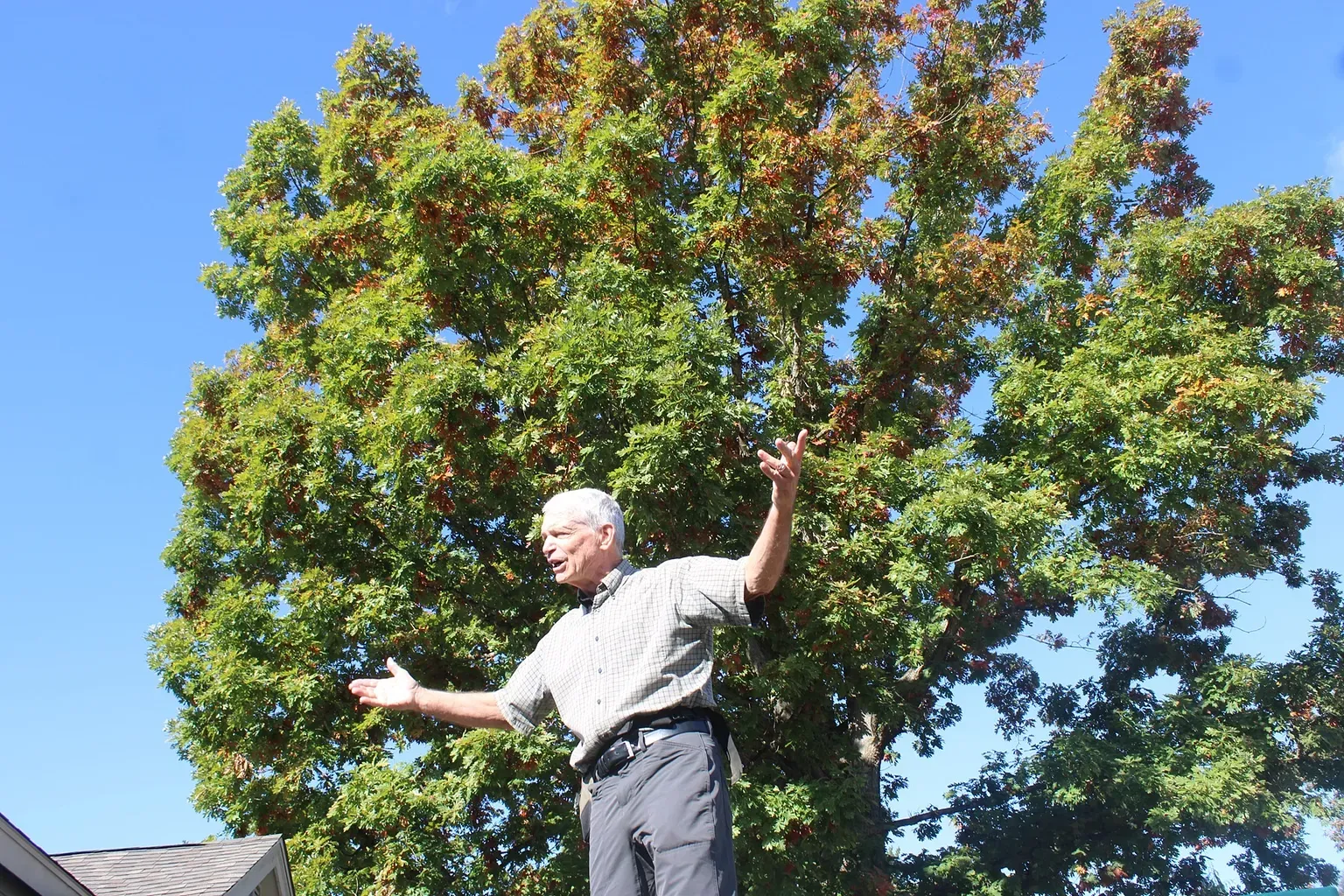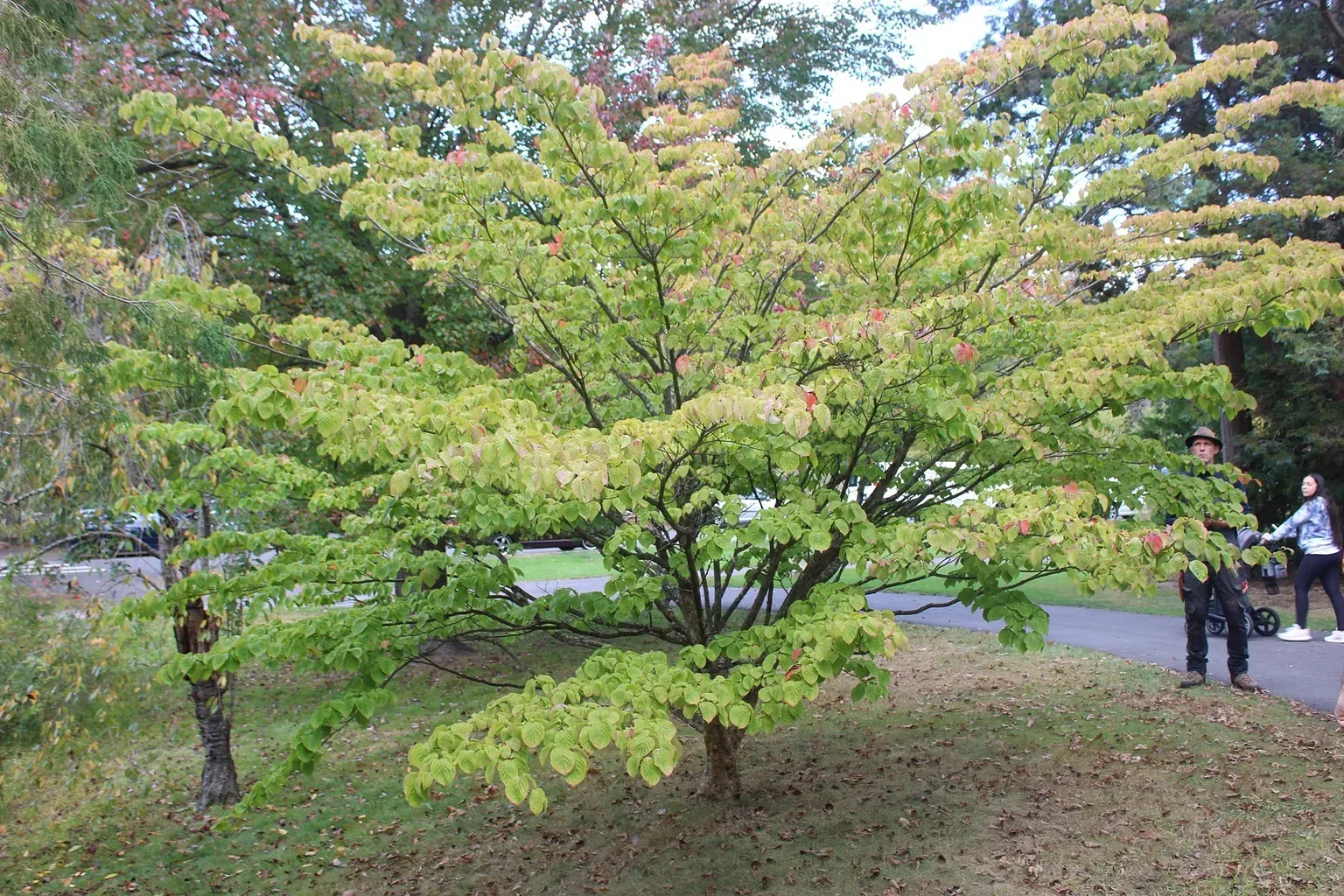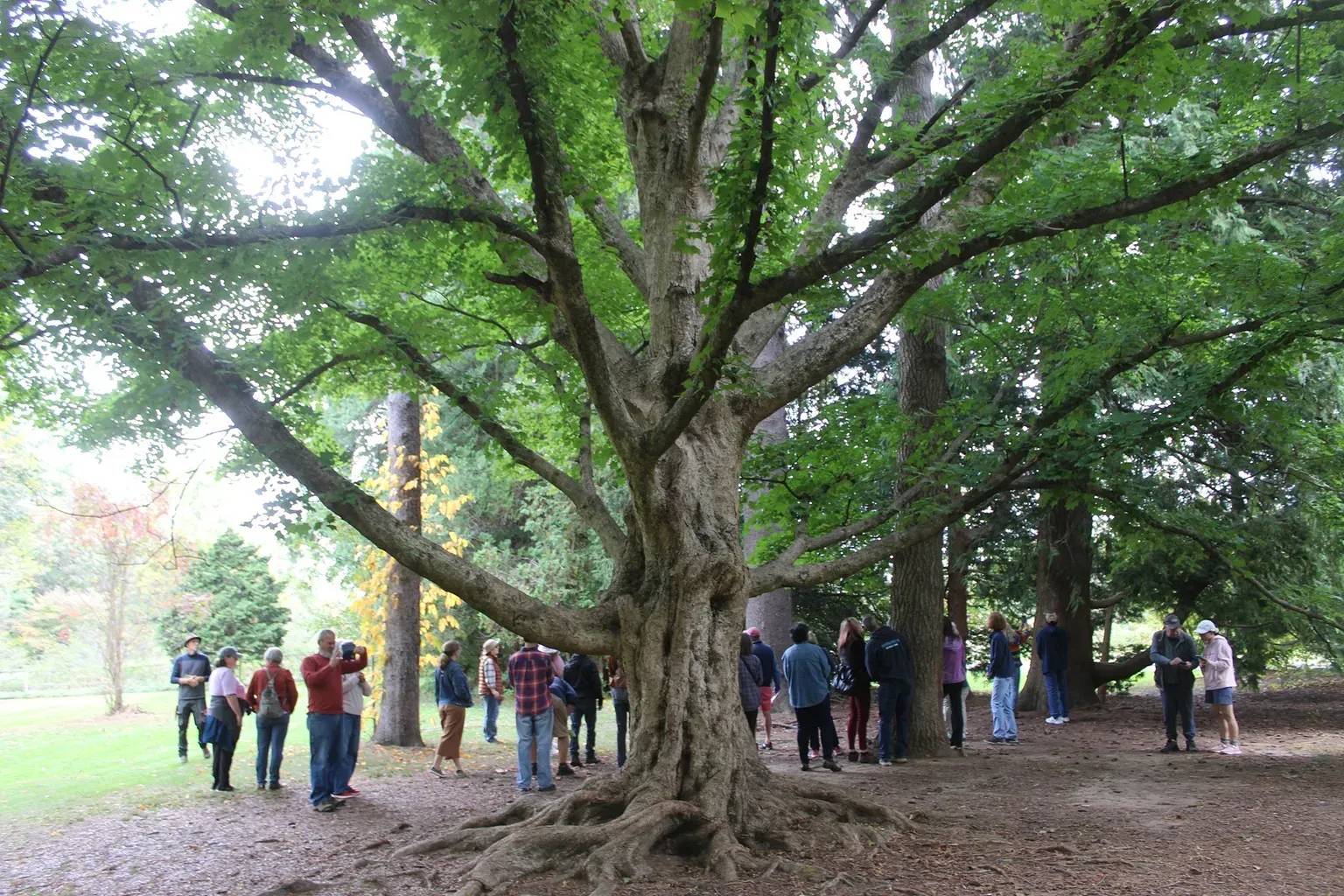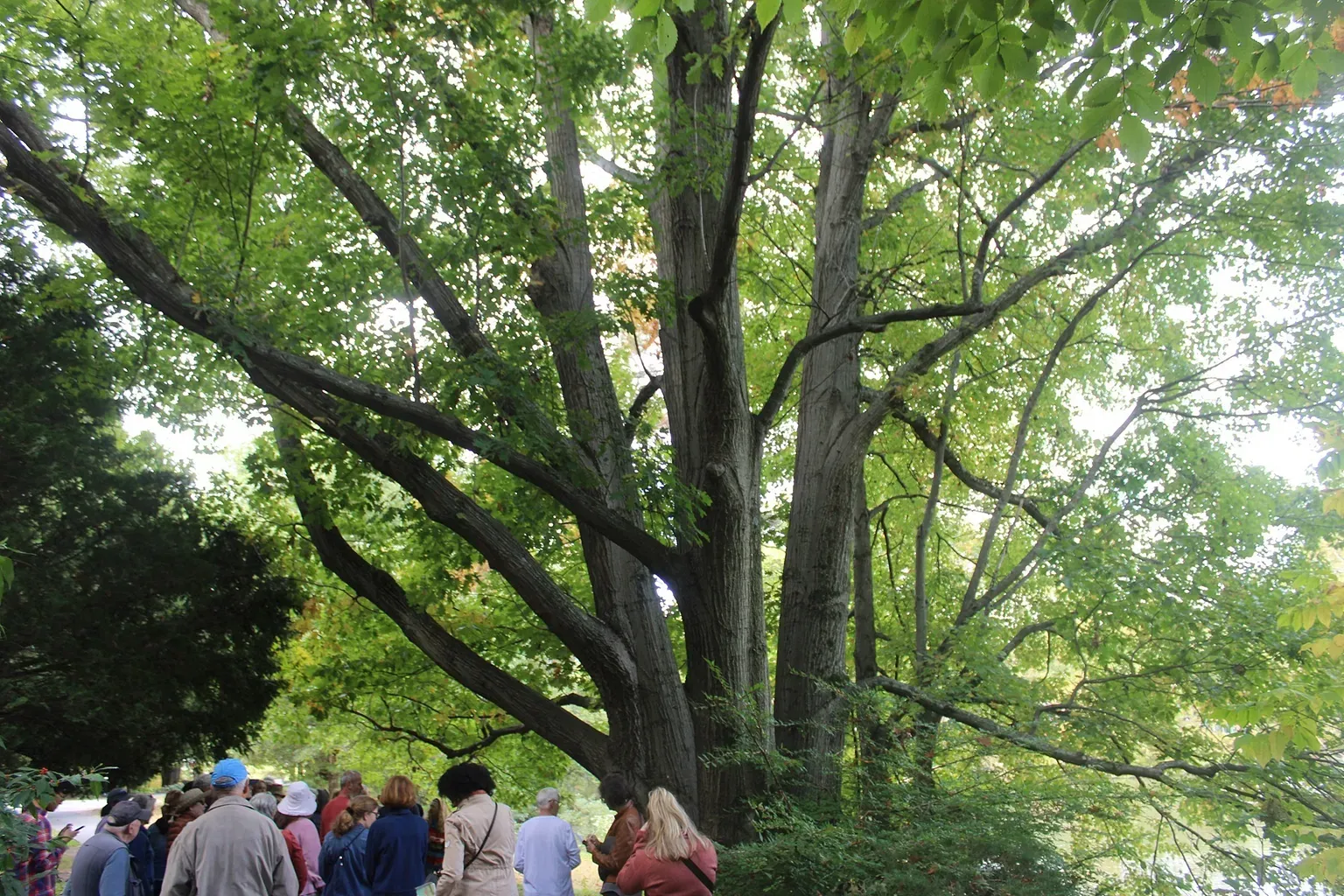Tree Tour with Arborist John Kehoe
Kim Arboretum
Elizabeth Park
West Hartford
Oct. 2, 2024
I love trees. But maybe not as much as John Kehoe does.

He was our guide on a tour of the notable trees that make the Kim Arboretum at Elizabeth Park in West Hartford their home.
One tree on the tour was a white oak, also known as a charter oak. The story of the charter oak says that Colonial-era Nutmeggers hid the state’s charter inside the tree when the British came to seize it. The tree was later toppled in a storm, but history-savvy residents grabbed its acorns and spread them around the state. The tree John stopped us in front of is rumored to be one of the descendants of the original, one of about 100 across Connecticut.

Of course, not all trees are as massive as the white oak, or native to this part of the world. While there are native dogwoods in Connecticut, the kousa dogwood hails from East Asia. In fact, the word “kousa” is Japanese for “dogwood,” making the name somewhat redundant.

There’s a difference between non-native plants and invasive species. John explained that an invasive species is one that replaces native plants by outperforming them, making them a threat to the native species’ existence. One such example is the Norway maple, brought over from Europe for its aesthetic appeal. It produces the telltale “helicopter” seeds that spiral down to the earth at this time of year.

Towards the end of the tour, John showed us some of the more unique trees in the park. He took us to the Savatieri mono maple, another tree which hails from Eastern Asia. The one in Elizabeth Park is the champion tree for the state, and stands at over 80 feet tall. It’s one of the most photographed trees in the entire park.
I asked John what we know about the social and emotional lives of trees. After all, research has shown that trees share resources and communicate with each other through their root systems. But what had he seen and experienced in his many years in the woods?
“I feel the energy every time I go into the forest. You just get this feeling every time you go in there,” he said. He walked over and touched the trunk of a tree near him. “There’s energy there. There’s strength.”
He talked about the massive amounts of energy that run through root systems that extend hundreds of feet below the earth that we can’t see. The network of fungi and other organisms that cooperate and compete with trees. He left us in awe of the incredible power that pulsates beneath our feet and in the air around us, without us humans even realizing.

For me, trees represent an unimaginably vast source of knowledge. I don’t think it’s a coincidence that one of the most enduring symbols of Christianity is the Tree of Knowledge of Good and Evil. Trees stand for decades, sometimes centuries, observing the world around them as it changes. The original Charter Oak stood from the 12th century until it fell in 1856.
That’s six hundred years of history that one tree witnessed. Imagine the knowledge it contained, the knowledge that entire forests contain. If only we spoke the same language.
NEXTThe Kim Arboretum is open seven days a week, from dawn until dusk.
Jamil heads to the Wadsworth for First Thursday festivities.






